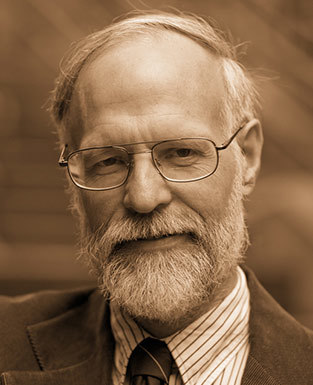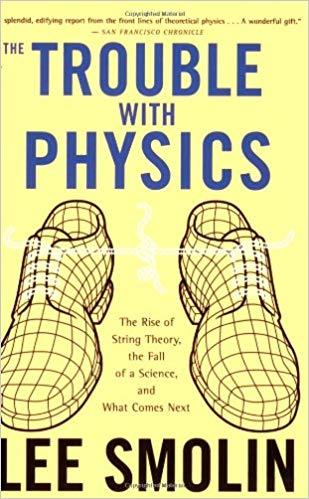Michael J. Behe's Blog, page 497
April 12, 2019
Denisovans sure got around; turns out, they are “diverse”
One of those mysterious groups, you know, who start to appear more often in the fossil record as we dig more…
The now-extinct people that we call Denisovans actually consisted of three distinct groups of humans spread throughout Eurasia, the researchers say. And one of those groups might well even be considered its own species. Ancient humans would have interbred with all three of these lineages on multiple occasions, as Neanderthals, Denisovans and Homo sapiens swapped genetic material in a process that has left Denisovan DNA still residing in our cells today… Perhaps the most significant way that the new genetic evidence alters our conception of the Denisovans is that it reveals them to be diverse. In some modern Indonesians, scientists found not one, but two distinct Denisovan genomic signatures. What’s more, these two groups also looked different from the Denisovans previously found in Siberia, which they researchers say was another group altogether. For those of you keeping count, that adds up to three different kinds of Denisovans spread from Siberia to across the disparate islands of Indonesia. Nathaniel Scharping, “The Denisovans May Have Been More Than a Single Species” at Discover Magazine
Just what the concept of “speciation” adds to the human picture is unclear. But it makes for news stories.
The paper in Cell is (open access):
Summary: Genome sequences are known for two archaic hominins—Neanderthals and Denisovans—which interbred with anatomically modern humans as they dispersed out of Africa. We identified high-confidence archaic haplotypes in 161 new genomes spanning 14 island groups in Island Southeast Asia and New Guinea and found large stretches of DNA that are inconsistent with a single introgressing Denisovan origin. Instead, modern Papuans carry hundreds of gene variants from two deeply divergent Denisovan lineages that separated over 350 thousand years ago. Spatial and temporal structure among these lineages suggest that introgression from one of these Denisovan groups predominantly took place east of the Wallace line and continued until near the end of the Pleistocene. A third Denisovan lineage occurs in modern East Asians. This regional mosaic suggests considerable complexity in archaic contact, with modern humans interbreeding with multiple Denisovan groups that were geographically isolated from each other over deep evolutionary time.Guy S. Jacobs, Georgi Hudjashov, Lauri Saag, Herawati Sudoyo, J. Stephen Lansing, Murray P. Cox , “Multiple Deeply Divergent Denisovan Ancestries in Papuans” at Cell April 11, 2019DOI:https://doi.org/10.1016/j.cell.2019.0...
Follow UD News at Twitter!
See also: A physicist looks at biology’s problem of “speciation” in humans
and
Shakeup! New human find from over 50,000 years ago shows our ancestors were smarter than once thought A news roundup. J. R. Miller points out, however, that a lot of the “news” is face-saving hype
Copyright © 2019 Uncommon Descent . This Feed is for personal non-commercial use only. If you are not reading this material in your news aggregator, the site you are looking at is guilty of copyright infringement UNLESS EXPLICIT PERMISSION OTHERWISE HAS BEEN GIVEN. Please contact legal@uncommondescent.com so we can take legal action immediately.
Plugin by Taragana
Plants use glutamate, like mammals, to speed nervous system transmission
 Thale cress (Arabidopsis thaliana)
Thale cress (Arabidopsis thaliana)Researchers: Yes, plants have nervous systems too:
Plants turn out not only to have nervous systems but nervous systems that are analogous to those of animals. Recently, a research team observed the outcome of wounding a plant called Arabidopsis thaliana, a mustard often used in experiments. The really remarkable part of this apparent convergent evolution of animals and plants is that “these channels are activated by extracellular glutamate, a well-known mammalian neurotransmitter” …
Of course, insects find a way around the communications among plant nervous systems. One insect, for example, gets plants to transmit false information to other plants. … Mind Matters at
See also: Can plants be as smart as animals? Seeking to thrive and grow, plants communicate extensively, without a mind or a brain
and
Evolution appears to converge on goals—but in Darwinian terms, is that possible? Using glutamate as a neurotransmitter is an example of convergence between mammals and plants.
Follow UD News at Twitter!
Copyright © 2019 Uncommon Descent . This Feed is for personal non-commercial use only. If you are not reading this material in your news aggregator, the site you are looking at is guilty of copyright infringement UNLESS EXPLICIT PERMISSION OTHERWISE HAS BEEN GIVEN. Please contact legal@uncommondescent.com so we can take legal action immediately.
Plugin by Taragana
Faint hopes easily revived! “Life may be evolving” on closest exoplanet
The current hopes are pinned on Proxima-b, despite the radiation from red dwarf star Proxima Centauri, 4.24 light years from Earth:
Most researchers consider the presence of liquid water essential to the development of life, so Proxima-b seems like a good candidate. However, the radiation from being so close to a red dwarf would make it inhospitable to us even if there’s water. The radiation might not be a deal-breaker for the development of alien life on Proxima-b, though. Lisa Kaltenegger and Jack O’Malley-James from Cornell modeled the surface ultraviolet radiation on four prominent exoplanets: Proxima-b, TRAPPIST-1e, Ross-128b, and LHS-1140b. It turns out, Proxima-b isn’t that bad compared with Earth’s past.Ryan Whitwam, “Life May Be Evolving on the Closest Alien Planet to Earth” at ExtremeTech
The fundamental problem is still the same: It is very difficult to extrapolate from a sample of one instance of life. Suppose we had information on tens of thousands of exoplanets, thousands of which had life. Making the reasonable assumption that a pattern develops within this data, we could then give fairly reliable odds on a given planet having life if its relevant data are known. But we don’t have any of this. It’s all a dreamscape.
Also, we must be prepared to accept anomalies: What if we have data on tens of thousands of planets and none of them have life? Where does that leave us besides alone? We’d be better off with the data than the dreamscape, of course.
Follow UD News at Twitter!
See also: Tales of an invented god (why space aliens will always be out there)
Copyright © 2019 Uncommon Descent . This Feed is for personal non-commercial use only. If you are not reading this material in your news aggregator, the site you are looking at is guilty of copyright infringement UNLESS EXPLICIT PERMISSION OTHERWISE HAS BEEN GIVEN. Please contact legal@uncommondescent.com so we can take legal action immediately.
Plugin by Taragana
What are the implications of Julian Assange’s arrest in London?
Yesterday, a prematurely aged-looking Assange (he is 47) — a founder of Wikileaks and Australian — was arrested by UK Police after the Ecuadorean Embassy he has sought asylum in since 2012 withdrew its protection.
 Assange being arrested (HT, DM)
Assange being arrested (HT, DM)The arrest raises questions on dissidents, privacy, protection of legitimate secrets, the public’s right to know more than officials, power brokers and publicists or other gatekeepers want, and more. (Let us not forget the Pentagon Papers and their impact.) Many of these concerns bleed over into how controversial and sometimes unpopular views like ID will be treated going forward — especially regarding freedom of the Internet.
So, there is relevance.
Again, Daily Mail gives some background:
‘Narcissist’ Julian Assange faces DECADES in US jail after he was hauled screaming out of Ecuadorian Embassy by EIGHT officers, found guilty of skipping UK bail and charged by American government with hacking 750,000 classified documents
Wikileaks founder dragged from Ecuadorian Embassy in handcuffs by large group of police officers yesterday
He has not left embassy since 2012, when he was offered refuge from allegations of sexual assault in Sweden
Arrest was for skipping bail that year and also for a US extradition request over computer hacking charges
Ecuador said decision came after he behaved badly and interfered with its affairs during his seven-year stay
Appeared at Westminster Magistrates Court where he was found guilty of breaching bail conditions in 2012
He faces a further court hearing in May relating to his possible extradition to the US on the hacking charges
But the US is reportedly set to file further charges in the coming days that could see him in jail for decades
Corbyn told [UK] Government not to extradite Assange for ‘exposing evidence of atrocities in Iraq and Afghanistan’
So, hero, villain or a bit of both? In a world where questions of cover-up, conspiracies, character assassination, conspiracist speculation, false flag agit prop operations, propagandistic street theatre, diminished credibility of major media, bias and agendas backed by ruthless power, turnabout accusation and much more are common, where also questions of web censorship are on the table, are we at a watershed?
I forgot: could he have a deadman switch that might be activated to release a huge, damaging, chaos-inducing infodump?
Are there implications for those who advocate views that are unwelcome in halls of power? END
Copyright © 2019 Uncommon Descent . This Feed is for personal non-commercial use only. If you are not reading this material in your news aggregator, the site you are looking at is guilty of copyright infringement UNLESS EXPLICIT PERMISSION OTHERWISE HAS BEEN GIVEN. Please contact legal@uncommondescent.com so we can take legal action immediately.
Plugin by Taragana
Have Scientists in China “brain hacked” monkeys?
. . . By inserting human genes?
The UK Daily Mail summarises news reports making the rounds:

The report details:
A new study into the unique evolution of human intelligence has raised ethical concerns after Chinese scientists implanted human brain genes into monkeys to boost their development.
Researchers inserted human versions of MCPH1, a gene that scientists believe plays a role in the development of the human brain, into 11 rhesus monkeys.
They found the monkeys’ brains — like those of humans — took longer to develop, and the animals performed better in tests of short-term memory as well as reaction time compared to wild monkeys.
However, the monkeys did not grow bigger brains than the control group.
The test, the latest in a series of biomedical experiments in China to have fuelled medical ethics debates, has already drawn ethical concerns, and comparisons with dystopian sci-fi ‘Planet of the Apes’.
So, is this real or “monkey business”? Are we about to go bananas, Planet of the Apes style?

I rather doubt it. It seems from details, some research was done by “Kunming Institute of Zoology and the Chinese Academy of Sciences, working with US researchers at the University of North Carolina ” and on a fairly small sample of survivors, may have shown improved brain functionality. They went on to speculate on ” findings demonstrated that transgenic nonhuman primates (excluding ape species) have the potential to provide important — and potentially unique — insights into basic questions of what actually makes human unique.”
And of course, as rhesus monkeys are fairly low on the evolutionary totem-pole, they thought ethical concerns are minimised.
Monkeying with monkey genomes, of course, points to attempts to do the same with humans, and there is already talk of gene editing, i.e. Eugenics 2.0 looms, maybe even Stalin’s dream of half-ape super-soldiers (and suitably dimwit labourers for those dark satanic mills). Can sexual companions be far behind, given that sex robots are being made now?
Lest we forget, this is how Eugenics 1.0 was conceived of by its leaders and how it was sold to the masses:
 Logo from the Second International Congress of Eugenics, 1921
Logo from the Second International Congress of Eugenics, 1921Where, Hunter’s Civic Biology (the book at the heart of the infamous Scopes trial and promotional stunt) — as its title suggests — advocated eugenics.
So, it seems there are ontological, ethical, scientific and policy issues on the table forming a potentially toxic brew indeed.
Well, what do we think, why? END
Copyright © 2019 Uncommon Descent . This Feed is for personal non-commercial use only. If you are not reading this material in your news aggregator, the site you are looking at is guilty of copyright infringement UNLESS EXPLICIT PERMISSION OTHERWISE HAS BEEN GIVEN. Please contact legal@uncommondescent.com so we can take legal action immediately.
Plugin by Taragana
April 11, 2019
Shakeup! New human find from over 50,000 years ago shows our ancestors were smarter than once thought
 Philip Piper holds a cast of a third metatarsal discovered earlier, in 2007/
ScienceDaily
Philip Piper holds a cast of a third metatarsal discovered earlier, in 2007/
ScienceDaily
This is the second new human group to be found in southeast Asia in recent years, the first being Flores man (2004):
But Détroit and his colleagues argue that the Callao Cave remains are distinct from those of H. floresiensis and other hominins — including a species called Homo erectus thought to have been the first human relative to leave Africa, some 2 million years ago…
The researchers are cautious about estimating H. luzonensis’ height, because there are only a few remains to go on. But given its small teeth, and the foot bone reported in 2010, Détroit thinks that its body size was within the range of small H. sapiens, such as members of some Indigenous ethnic groups living on Luzon and elsewhere in the Philippines today, sometimes known collectively as the Philippine Negritos. Men from these groups living in Luzon have a recorded mean height of around 151 centimetres and the women about 142 centimetres. Nic Fleming, “Unknown human relative discovered in Philippine cave” at Nature
It’s a good sign when researchers notice that small stature of Homo luzonensis is actually normal for the area today and may not require a unique evolution theory. Or even the claim that the group is a unique species:
Some researchers question whether the evidence is enough to warrant a new species designation. “I think it is a really interesting set of remains, but it’s really at the lower end of the amount of evidence that you would want to base a new species on,” says Bernard Wood, a professor who studies human origins at George Washington University and wasn’t involved in the study.
There could be other explanations for the unique combination of tooth features, he says. The group of individuals that reached Luzon was likely a random assortment of genotypes. With inbreeding over time, genetic drift could have pushed them to develop the unique characteristics that Détroit and his colleagues observed. So there’s a possibility that the remains represent merely an unusual island population of individuals, rather than a new species, Wood explains. Katarina Zimmer, “New Species of Human, Homo luzonensis, Identified in the Philippines” at The Scientist
Let’s face it, they really wouldn’t matter, no matter how intact their skeletons are, if no one can claim they are a “new species.”
Paleoanthropologist John Hawks points out the significance of the find
So, what does this discovery mean? To me, it solidifies the case that ancient human relatives were a lot smarter and more adaptable than we used to give them credit for. …
The evidence for life on these islands goes back a long way. Some hominins were making stone tools on Flores more than a million years ago, and the oldest hominin fossil on that island is around 700,000 years old. Last year, paleoarchaeologist Thomas Ingicco, from the National Museum of Natural History in Paris, and colleagues reported on work at the site of Kalinga, Luzon. There, they found stone tools and butchered rhinoceros bones, also around 700,000 years old. Very early forms of Homo must have surpassed barriers and found new ways of life in places with very different climates and plant and animal communities than their African ancestors. Meanwhile, within Africa, a diversity of hominin species continued to exist throughout most of the last million years. John Hawks, “New Hominin Shakes the Family Tree—Again” at Sapiens
Yes, the subhumans become rarer with each passing year…
J. R. Miller of the More Than Cake blog writes us to offers some reflections on the vast cloud of hype around the find, pointing out that the Wall Street Journal’s article strips the headline of any meaning title coverage:
“Small-jawed with dainty teeth, able to walk upright but with feet still shaped to climb, these island creatures were a mix-and-match patchwork of primitive and advanced features in a unique variation of the human form, …”
“So far, the scientists haven’t found evidence that these creatures used tools to hunt or to process their food…”
“The scientists also have been unable to isolate DNA from the bones and teeth that could be used to understand how closely they were related to other human species.”
“The scientists also don’t know how these creatures reached the island” Robert Lee Hotz, “Fossil Evidence of New Human Species Found in Philippines” at Wall Street Journal (paywall)
Miller adds, “The article is full of conjecture and just-so stories qualified with “the species most likely,” “may have.” “might have,” etc.. The conclusion? “Recent human evolution, he said ‘just got even messier, more complicated and a whole lot more interesting.’”
“In other words, the bones we found do not match our theory, but trust us, we will come up with an ad hoc answer soon without considering the possibility that we might be wrong about human history.”
You know, J .R., what about the possibility that ad hockery is a formal subject these days in grad school? I mean for those who need to do it like a pro?
See also: Was Neanderthal man fully human? The role racism played in assessing the evidence (J. R. Miller)
and
Do racial assumptions prevent recognizing Homo erectus as fully human? (J. R. Miller)
Follow UD News at Twitter!
Copyright © 2019 Uncommon Descent . This Feed is for personal non-commercial use only. If you are not reading this material in your news aggregator, the site you are looking at is guilty of copyright infringement UNLESS EXPLICIT PERMISSION OTHERWISE HAS BEEN GIVEN. Please contact legal@uncommondescent.com so we can take legal action immediately.
Plugin by Taragana
SCI-TECH NEWSWATCH: Israel’s Beresheet spacecraft has a loss of comms and fails in a Moon landing attempt
The newly re-elected Prime Minister promises that Israel will persist.
See Jerusalem Post for details (vids are in Hebrew):
Israel’s Beresheet spacecraft fails to land safely on the moon
Prime Minister Benjamin Netanyahu, who was at hand to watch the landing, said that Israel will continue to try landing on the moon.
By JERUSALEM POST STAFF, MARCY OSTER/JTA
April 11, 2019 22:51
A sad last minute breakdown, but such is not unprecedented. And, a robot casualty is in an utterly different ontological and ethical class from a human casualty.
There is a reason why they say something routine or simple “is not rocket science.” The will to risk and explore is a benefit to all humanity. Here’s to good onward success. END
Copyright © 2019 Uncommon Descent . This Feed is for personal non-commercial use only. If you are not reading this material in your news aggregator, the site you are looking at is guilty of copyright infringement UNLESS EXPLICIT PERMISSION OTHERWISE HAS BEEN GIVEN. Please contact legal@uncommondescent.com so we can take legal action immediately.
Plugin by Taragana
Transhumanists want to fix our morality for us as well
 Wesley J.Smith
Wesley J.SmithRecently, ethicist and lawyer Wesley J.Smith expressed the view at Mind Matters that
The transhumanist movement swoons over increasing intelligence. If I had to choose between increasing the intelligence of the human race versus enhancing our capacity to love, the human race would be far better off embracing the latter than the former. There is no brain implant for that. More.
 Richard Weikart
Richard WeikartHistorian Richard Weikart responds, writing to us here,
Actually, some segments of the transhumanist movement, such as Oxford philosopher Julian Savulescu, would largely agree that the “capacity to love” should be preferred to increasing intelligence. As I explain in detail in the last chapter of my book, The Death of Humanity: And the Case for Life, Savulescu argues that increasing human intelligence without also using what he calls “moral enhancement” could be disastrous. However, Savulescu disagrees with Wesley Smith by arguing that morality is biologically ingrained, and thus he thinks that we can use biological methods (primarily genetic engineering and hormone therapies) to improve human morality.
Yes. Re Savulescu, See, for example, “Prof: We Have A ‘Moral Obligation To Select Ethically Better Children’ Through Genetic Screening” Well, eugenics, “the best organized philanthropic project of all time” is back, having failed to learn a thing. And “Morals: Some Now Claim That The Government Fixing Our Brains Is The Only Solution”
That would appear to make transhumanism an enemy of free will and of freedom generally. But give them credit for being honest about it.
Note: Weikart’s two recent books are The Death of Humanity And the Case for Life : And the Case for Life (2016) and Hitler’s Religion: The twisted beliefs that drove the Reich: The Twisted Beliefs That Drove the Third Reich (2016)
See also: Wesley J.Smith: Transhumanists don’t seem much interested in such real improvements in the human condition. They want quick, easy technological fixes
Follow UD News at Twitter!
Copyright © 2019 Uncommon Descent . This Feed is for personal non-commercial use only. If you are not reading this material in your news aggregator, the site you are looking at is guilty of copyright infringement UNLESS EXPLICIT PERMISSION OTHERWISE HAS BEEN GIVEN. Please contact legal@uncommondescent.com so we can take legal action immediately.
Plugin by Taragana
UD author’s suggested correction to calculus goes viral
 Jonathan Bartlett
Jonathan BartlettFurther to johnnyb’s recent post “Is Standard Calculus Notation Wrong?,” introducing his new paper* in which he explains,
Some of you know that I published a Calculus book last year. My goal in this was mostly to counter-act the dry, boring, and difficult-to-understand textbooks that dominate the field. However, when it came to the second derivative, I realized that not only is the notation unintuitive, there is literally no explanation for it in any textbook I could find.
… the notation itself is problematic. Although it is written as a fraction, the numerator and denominator cannot be separated without causing math errors. This problem is somewhat more widely known, and has a workaround for it, known as Faa di Bruno’s formula.
My goal was to present a reason for the notation to my readers/students, so that they could more intuitively grasp the purpose of the notation. So, I decided that since no one else was providing an explanation, I would try to derive the notation myself. More.
The story we ran on the topic at Mind Matters has gone viral via Slashdot, with five thousand views since yesterday afternoon. (A paper about calculus?) Figures, Bartlett must have a point about the problem.
Paper: Bartlett, Jonathan and Asatur Khurshudyan. 2019. Extending the Algebraic Manipulability of Differentials. Dynamics of Continuous, Discrete and Impulsive Systems, Series A: Mathematical Analysis 26(3):217-230. (open access),
Follow UD News at Twitter!
See also: Walter Bradley Center Fellow Discovers Longstanding Flaw in Elementary Calculus Jonathan Bartlett: The flaw doesn’t lead directly to wrong answers but it does create confusion. The lead author, Jonathan Bartlett, noted that the likely source of the bad notation was a philosophical issue. Because no one wanted to give differentials that same ontological status as other numbers, everyone presumed that the notational problems were simply the result of this fact, and no one pursued it further. (Mind Matters)
and
Is Standard Calculus Notation Wrong? Bartlett: The reason why this was not noticed before, I believe, is because, since the 1800s, mathematicians have not wanted to believe that infinitesimals are valid entities. Therefore, they were not concerned when the second derivative did not operate as a fraction – it didn’t need to, because it indeed wasn’t a fraction. Infinities and infinitesimals are the non-materialistic aspects of mathematics, just as teleology, purpose, and desire are the non-materialistic aspects of biology.
(Uncommon Descent)
Copyright © 2019 Uncommon Descent . This Feed is for personal non-commercial use only. If you are not reading this material in your news aggregator, the site you are looking at is guilty of copyright infringement UNLESS EXPLICIT PERMISSION OTHERWISE HAS BEEN GIVEN. Please contact legal@uncommondescent.com so we can take legal action immediately.
Plugin by Taragana
April 10, 2019
Is space really “the final illusion”? Rob Sheldon comments
Perimeter Institute cosmologist Lee Smolin tells us that “The intuitive idea that objects influence each other because they’re in physical proximity is soon to become another of those beliefs that turn out to be wrong when we look deeper.: From his Conclusion:
The details are unimportant, especially at this early stage. But the takeaway lesson is that the intuitive idea that objects influence each other because they are close in space is soon to become another of those easy beliefs that turn out to be wrong when we look deeper. The smoothness of space is soon to become an illusion that hides a tiny and complex world of causal interactions, which do not live in space—but which rather define and create space as they create the future from the present. Lee Smolin, “Space: The Final Illusion” at Scientific American
We asked Rob Sheldon to comment:
Lee Smolin is head of the Perimeter Institute in Toronto.

He is a staunch opponent of String Theory, and published a memorable book, The Trouble With Physics: The Rise of String Theory, The Fall of a Science, and What Comes Next (2007).
He proposes that “quantum loop gravity” is the best replacement for String Theory, which will unite General Relativity with the Standard Model. Needless to say, the two groups are not on speaking terms. Along the way, Lee has become very skeptical of the Newtonian concepts of time and causality. Like Sabine, he thinks that progress in physics has stalled, but unlike Sabine he thinks it is the Newtonian metaphysics that caused it.
To explain his concerns, here’s a brief introduction to Newtonian metaphysics and Einstein’s Special Relativity that replaced it:
In Newton’s universe, the two things that exist a priori are space & time. Einstein’s Special Relativity (SR) theory characterized the universe as a lattice of meter sticks with clocks at every intersection. But then Einstein showed how it was possible to “squash” space by going very fast at nearly the speed-of-light, which simultaneously “stretched” time.
Taylor & Wheeler, in a very popular SR textbook, argue that space = speed-of-light * time, and the clocks are really just a fourth spatial dimension. T&W used an analogy of kingdom where maps used kilometers for North-South directions and miles for East-West directions, and no one realized that kilometers and miles could be inter-converted. Then all these squash-stretch transformations (known as Lorentz transforms) are really nothing more than rotations in 4-dimensions of space-time. Special Relativity just turned into a map-reading exercise.
But this Einstein view made it seem that time “just exists” the way a meter stick “just exists”. What happens tomorrow is already there, along with what happened yesterday. This is also known as “the block universe” and seemingly removes all causality. Nothing in the past determines the future.
But if there is no causality, then time doesn’t flow, ethics doesn’t have choices, and quantum wave functions don’t collapse. In short, there doesn’t seem to be a way to reconcile Einstein’s view of space-time & gravity with either quantum mechanics/dynamics or ethics or any observational science. This is the nub of the greatest mystery of modern physics: the incompatibility of gravity with the other four forces.
Smolin’s view is to treat time as fundamental, and space as an epiphenomenon. He gets back causality and gravity, but seems to lose science. He argues that he can recover science but at the cost of modifying our Newtonian metaphysics to remove space. He tries to explain this more fully in his two last books: Time Reborn: From the Crisis in Physics to the Future of the Universe (2013) and The Singular Universe and the Reality of Time: A Proposal in Natural Philosophy (2014),
Peter Woit, who—along with Sabine Hossenfelder—is my go-to-guy for no-BS theoretical physics analysis—reviewed the book that explains his “no-space” hypothesis back in 2015. He finds Singular Universe less than compelling.
What Smolin seems to have in mind here is the hypothesis that physical laws are not “timeless”, but can evolve in time, with an example the ideas about “Cosmological Natural Selection” he has worked on. One problem with this is that the question then becomes “what law describes the evolution of physical laws?”, with an answer re-introducing “timeless” laws. Smolin refer to this as the “meta-law dilemma” and devotes a chapter to it, but I don’t think he has a convincing solution…
In his essay, Smolin gives a discussion of mathematics itself which I think few mathematicians would recognize, defining it as “the study of systems of evoked relationships inspired by observations of nature”, and consisting in bulk just of elaborations of the concepts of number, geometry, algebra and logic. I started my career in physics departments, and I’m well aware of how mathematics looks from that perspective (even if you have a lot of interest in math, like I did). My experience of moving to work in math departments made clear to me that the typical ideas of physicists about what mathematics is and what mathematicians do are highly naive, with Smolin’s a good example. Peter Woit, “” at Not Even Wrong
As far as I can tell, Smolin sees this as a Darwinian solution to The Multiverse Problem. I think I’d call it “The Multiphysics Solution”. I suppose this falls under the dictum, “Fight fire with fire.” My own estimation is “garbage in, garbage out.” Which is about as far as I got with his book as well as his SA essay.
![The Long Ascent: Genesis 1â 11 in Science & Myth, Volume 1 by [Sheldon, Robert]](https://i.gr-assets.com/images/S/compressed.photo.goodreads.com/hostedimages/1541285109i/26543752.jpg)
Rob Sheldon is the author of Genesis: The Long Ascent
Follow UD News at Twitter!
See also: Quadrillion possible ways to rescue string theory. Rob Sheldon comments.
Copyright © 2019 Uncommon Descent . This Feed is for personal non-commercial use only. If you are not reading this material in your news aggregator, the site you are looking at is guilty of copyright infringement UNLESS EXPLICIT PERMISSION OTHERWISE HAS BEEN GIVEN. Please contact legal@uncommondescent.com so we can take legal action immediately.
Plugin by Taragana
Michael J. Behe's Blog
- Michael J. Behe's profile
- 219 followers



